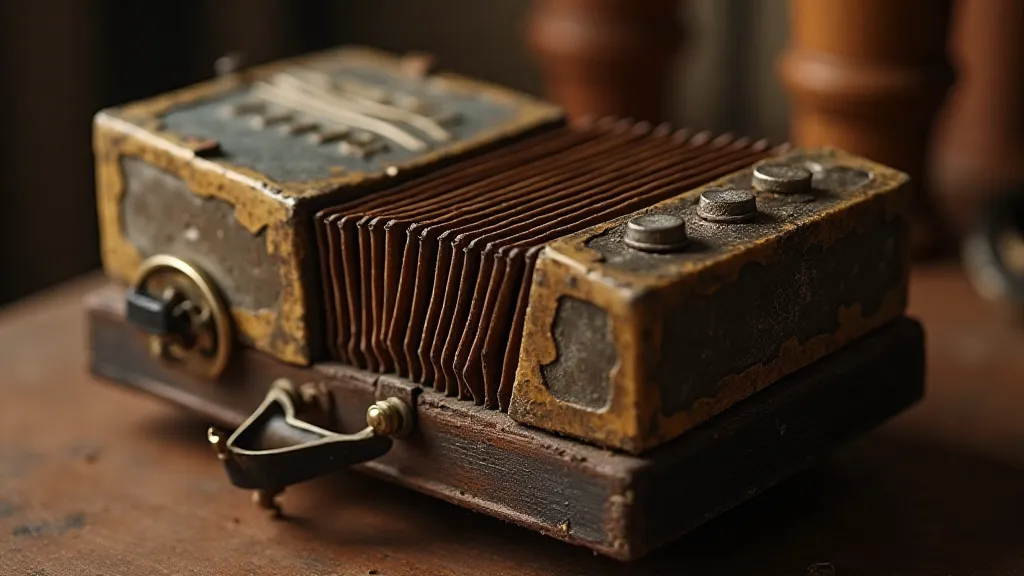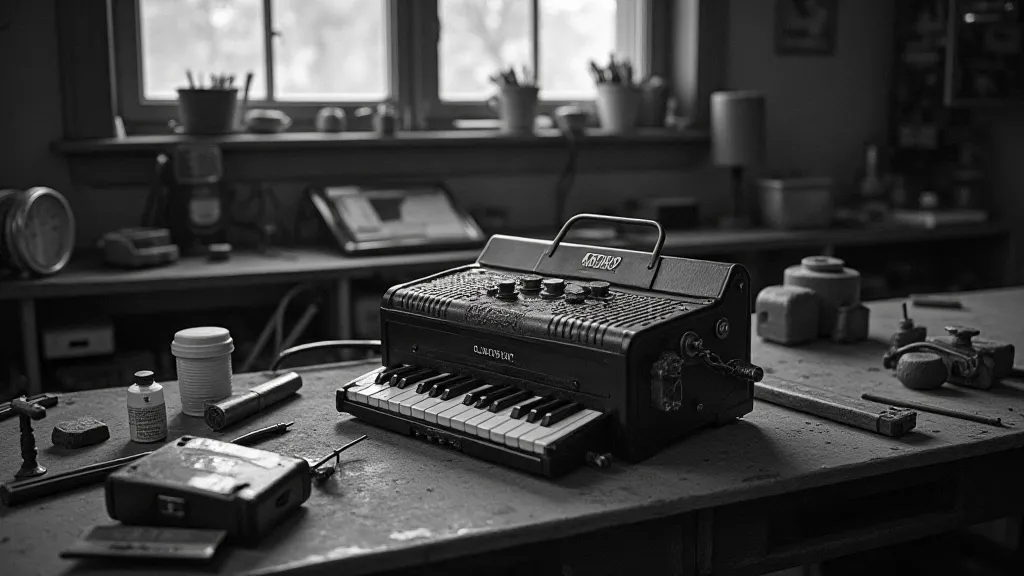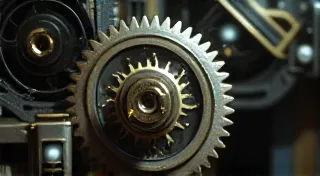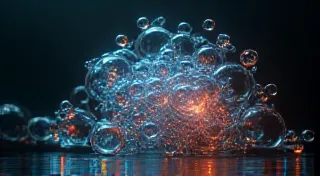Polarity's Dance: Exploring Magnetic Opposition and Harmony
There’s a certain melancholy beauty in the sound of an antique accordion. A sigh of bellows, the clicking of keys, the rich, resonant tones – it speaks of journeys taken, dances shared, and stories whispered across generations. It's a mechanical soul, filled with intricate workings, and as I'm fascinated by magnets, I'm often struck by the parallels between these complex instruments and the unseen forces that govern them: attraction and repulsion, the beautiful dance of polarity.
Magnets, at their core, are about this very dance. We learn early on about North and South poles – opposites that attract, and like poles that repel. It’s a fundamental law of physics, but it’s also a surprisingly profound metaphor. Think about human relationships, about creativity, even about the very fabric of the universe. Duality exists everywhere. Yin and Yang, light and shadow, positive and negative – these aren't just philosophical concepts; they are reflections of a deeper order, an elegant balance maintained through constant interaction.

The Craftsmanship and the Invisible Force
Consider the painstaking craftsmanship of an antique accordion. Each key is meticulously placed, each reed carefully tuned. The bellows, a marvel of engineering in themselves, are folded and secured with an expert’s hand. It's a tangible expression of human ingenuity, a physical manifestation of countless hours dedicated to a single, beautiful purpose. And yet, within that carefully constructed machine, lies an invisible force - the air pressure, the vibrations, the resonant frequencies that bring it to life. It’s a perfect analogy for magnets. We see the physical object, the sleek disc or the horseshoe shape, but we're experiencing the result of an unseen field, a force emanating from within.
My grandfather, a quiet and thoughtful man, was a collector of antique instruments. He possessed a small but cherished collection of accordions, each with its own story. I remember him carefully cleaning and oiling them, reverently handling each component as if it were a sacred artifact. He rarely spoke about their provenance, but I sensed a deep connection, a recognition of the human spirit embodied within their construction. He used to say, “Everything holds a story, if you know how to listen.” And it’s true – the accordions whispered tales of polka dances, of wandering musicians, of celebrations and sorrows.
Rare Earth Magnets: A Modern Marvel Reflecting Ancient Principles
Now, let's bring this into the realm of magnetic projects. The rare earth magnets we use today – neodymium, samarium cobalt – represent a pinnacle of modern materials science. Their power is astounding, a testament to our ability to harness the fundamental forces of nature. But their principles are as old as magnetism itself. The ancient Greeks observed the attraction of lodestones, a naturally occurring form of magnetite, thousands of years ago. They understood, intuitively, that these stones possessed a special property – a force that could influence other objects without physical contact. Their explorations into magnetism touch upon a fascinating intersection of science and perception, akin to how our brains interpret the world. One might even consider how magnetic anomalies, like those explored in navigation by magnetic anomaly, reveal hidden influences on our surroundings.
Building a simple magnetic levitation project, for example, isn’t just about assembling components; it’s about understanding that interplay of attraction and repulsion. It’s about recognizing that the seemingly simple act of suspending an object in mid-air is a miniature embodiment of the universal law of polarity. The balance achieved, the precarious stillness – it’s a form of artistic expression as valid as any painting or sculpture. Achieving these kinds of effects requires careful choreography, similar to what is explored in levitating echoes: choreographing magnetic suspension. The challenges – perfectly aligning the magnets, minimizing friction – demand a blend of technical skill and creative problem-solving.
Imagine building a small magnetic motor. The spinning of the rotor, powered solely by the interplay of magnetic forces, feels almost magical. It’s a tangible demonstration of energy conversion, a microcosm of the larger forces that drive our planet. And in that act of creation, we participate in a legacy that stretches back millennia – a journey of discovery driven by our innate curiosity and our desire to understand the world around us. It’s a pursuit that explores more than just physics; it delves into the very nature of perception and how we interpret invisible forces. Just as our minds play tricks on us, creating illusions, the way we perceive magnetic fields can be surprisingly skewed, illustrating the concept of magnetism and optical illusions.

The Elegance of Structure and Stability
The principles at play in a magnetic motor aren't solely about the forces themselves, but also the structures we design to harness them. Achieving stable configurations, preventing unwanted oscillations, and ensuring long-term functionality requires an understanding of engineering principles that mirror those used in architecture. Magnetic fields, like architectural blueprints, demand careful planning and execution. Building resilient magnetic structures, capable of enduring continuous operation, involves complex calculations and innovative design approaches – a true architect's gambit.
Beyond the Human Realm: Biological Resonance
The influence of magnetism isn’t confined to the mechanical world; it permeates biological systems in subtle, often mysterious ways. From the navigation of migratory birds to the development of embryos, magnetic fields play a role that scientists are only beginning to fully understand. The delicate balance of life is interwoven with the invisible forces that govern the universe – an area of ongoing research that highlights the unseen hand of magnetism in biological systems. The interplay between magnetic fields and living organisms offers a profound insight into the interconnectedness of all things.
Beyond the Science: A Feeling of Connection
Beyond the scientific principles and the technical challenges, there's something profoundly satisfying about working with magnets. It’s a connection to something larger than ourselves, a recognition of the elegant order that underlies the chaos of the universe. Just as the accordion evokes a sense of history and human connection, magnets remind us of our place within a continuous chain of discovery and innovation.
I'm often asked about the best way to restore an old accordion. It's not simply about replacing broken parts; it’s about respecting the original craftsmanship, preserving the character and integrity of the instrument. Similarly, with magnetic projects, it's not enough to simply build something that works. We need to consider the design, the aesthetics, the potential for beauty and inspiration.
Magnet Safety and Ethical Considerations
Of course, it’s important to acknowledge the responsibility that comes with harnessing powerful forces. Rare earth magnets are strong, and they require careful handling. Safety protocols must always be observed. We must also consider the environmental and ethical implications of their production, ensuring that these valuable resources are mined and processed responsibly.
There's a sense of humility that comes with working with these powerful magnets. They serve as a reminder of the limitations of our knowledge and the vastness of the universe. They encourage us to approach our work with respect, curiosity, and a commitment to ethical practices.

A Continuous Dance
The dance of polarity, whether it’s the attraction and repulsion of magnets or the harmonious interplay of bellows and keys in an antique accordion, is a continuous cycle of creation and destruction, of balance and imbalance. It’s a fundamental principle that governs the universe, and it’s a source of endless fascination and inspiration. By exploring these forces, by building and creating, we participate in a legacy that stretches back millennia – a journey of discovery driven by our innate curiosity and our desire to understand the world around us. And in that act of exploration, we find a profound sense of connection, a feeling of belonging to something larger than ourselves.
The exploration of magnetic phenomena is a journey that transcends mere scientific inquiry; it’s an exploration of the very fabric of reality. It invites us to ponder the nature of existence, to appreciate the beauty and complexity of the universe, and to recognize our place within this grand cosmic dance. It’s a reminder that even the seemingly simplest objects, like an antique accordion or a rare earth magnet, hold within them a universe of stories, insights, and possibilities.





